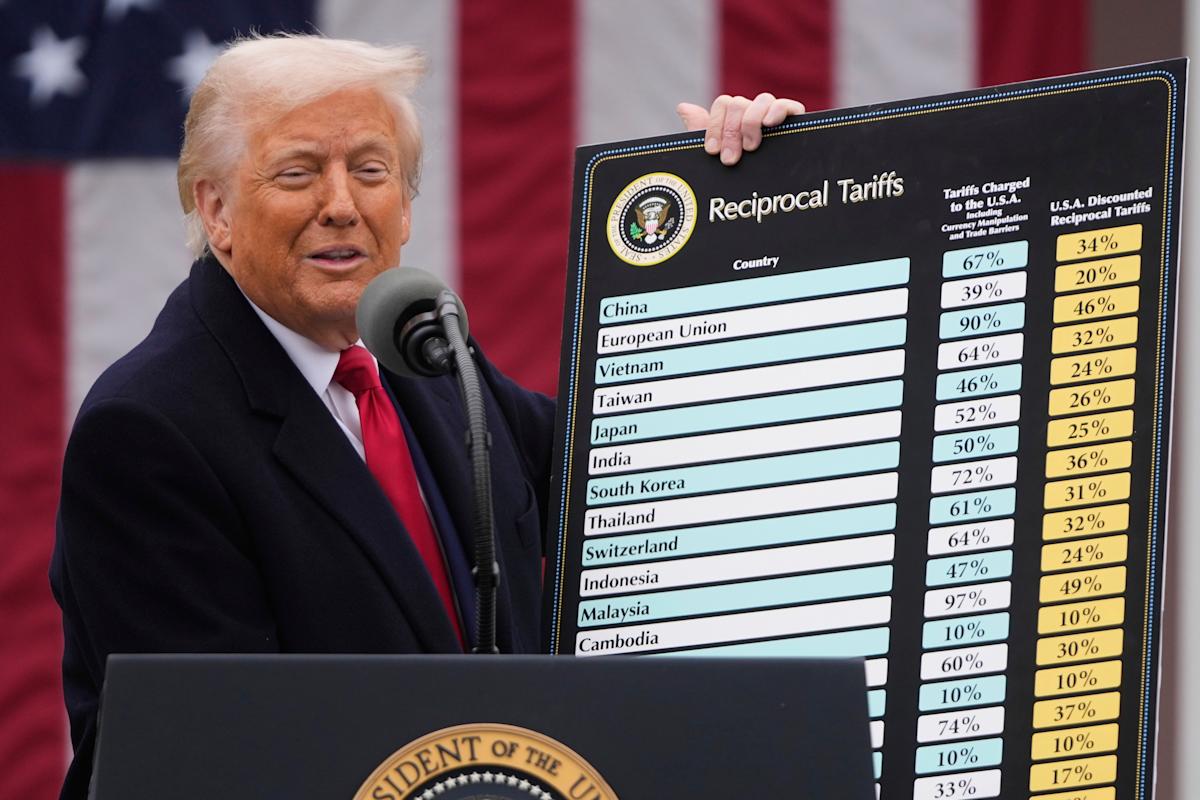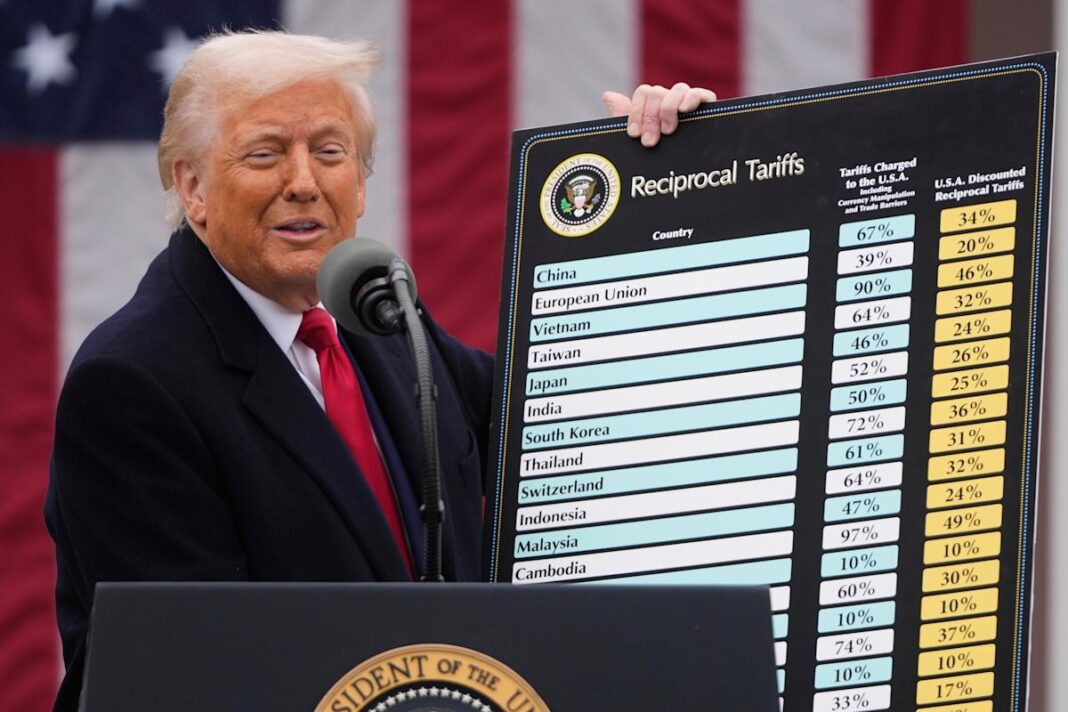## Will Trump Cave? China’s Bold Gamble on a Tariff Truce
The air crackles with tension as the trade war between the US and China enters another critical phase. The Wall Street Journal is reporting that China is betting big on one thing: that Donald Trump, despite his tough rhetoric, will ultimately back down from imposing new tariffs. This bold gamble hinges on the belief that the US economy, already facing headwinds, will be the first to buckle under the pressure.

Public Rhetoric and Market Expectations
The dance between public rhetoric and market behavior is a complex one, especially in the context of high-stakes geopolitical negotiations like the US-China trade war. Unionjournalism has consistently tracked the fluctuating narratives emanating from both sides, recognizing their profound impact on investor sentiment and global economic outlook. President Trump’s recent pronouncements, hinting at a potential de-escalation of tariffs, have sent ripples through the financial markets, prompting a surge in stock futures. This demonstrates the power of carefully crafted public statements to shape expectations and influence market behavior.
However, it’s crucial to remember that rhetoric is often a tool for leverage in complex negotiations. While Trump’s softer stance on tariffs may signal a willingness to compromise, it could also be a strategic move to put pressure on China to make concessions. Market participants must navigate this ambiguity with caution, recognizing that the path to a resolution remains uncertain.
Tariff Reality: A Complex Web of Rates and Exemptions
Understanding the intricacies of the current US tariff structure on Chinese imports is essential for comprehending the potential impact of any changes. The current landscape is characterized by a multifaceted approach involving different tariff rates and categories, creating a complex web of trade implications.
Specific Rates and Categories
The US has implemented a tiered system of tariffs on Chinese goods, ranging from 7.5% to 100%. These rates vary depending on the specific product category, with some sectors, like technology and agriculture, facing higher levies.
- Section 301 Tariffs: These tariffs, ranging from 7.5% to 25%, target a wide range of Chinese goods, including machinery, electronics, and consumer products. They were initially imposed in 2018 based on allegations of intellectual property theft and forced technology transfer.
- Fentanyl Crisis Tariffs: A separate 20% tariff was imposed on certain chemical imports from China to address the opioid crisis, targeting specific substances used in the production of fentanyl.
- Baseline Tariff: In addition to the aforementioned tariffs, a 10% tariff went into effect on April 5, 2019, on approximately $200 billion worth of Chinese goods.
Reported Exemption Plans: Auto Parts and Consumer Tech
Amidst the ongoing trade tensions, reports suggest that the Trump administration is considering exemptions for certain sectors. Notably, there are indications that the administration may exempt some auto parts from tariffs, aiming to alleviate pressure on the US automotive industry. Additionally, Trump has reportedly suspended duties on some consumer tech products, potentially signaling a desire to avoid further escalation in this sensitive sector.
These reported exemptions, however, remain subject to change and face potential pushback from various stakeholders. Their implementation would likely be contingent on ongoing negotiations and could have significant implications for specific industries and sectors.
Industry and Sector Implications
The intricate web of tariffs and exemptions has a profound impact on various industries and sectors. For example, the automotive industry, heavily reliant on imported parts from China, could benefit from any exemptions on auto parts, potentially easing production costs and bolstering competitiveness. However, other sectors, facing higher tariffs on their products, may experience increased costs and reduced market share.
The impact of these tariffs and exemptions extends beyond immediate cost implications. They can also influence investment decisions, innovation, and long-term competitiveness. Businesses operating in these sectors must carefully navigate the evolving landscape, adapting their strategies and seeking opportunities for diversification and resilience.
Trade War Implications: Beyond Tariffs and Exemptions
While tariffs and exemptions dominate the headlines, the US-China trade war has far-reaching implications that extend far beyond the immediate economic impact. This conflict has triggered a cascade of consequences, reshaping the global economic and geopolitical landscape.
Economic and Geopolitical Ramifications
The trade war has disrupted global supply chains, increasing uncertainty and volatility in international markets. It has also intensified technological competition between the two superpowers, with each side vying for dominance in crucial sectors like artificial intelligence and 5G. These developments have profound implications for national security, as technology increasingly plays a central role in military and economic power.
Global Supply Chain Disruptions
The intricate web of global supply chains has been significantly disrupted by the trade war. US and Chinese companies rely on each other for components, raw materials, and finished goods. Tariffs and retaliatory measures have increased costs, created delays, and forced businesses to seek alternative sourcing options, leading to uncertainty and instability in global production networks.
Technological Competition and National Security
The trade war has intensified the technological rivalry between the US and China. Both countries are investing heavily in research and development, seeking to dominate emerging technologies like artificial intelligence, 5G, and quantum computing. This competition has national security implications, as control over these technologies could provide a significant strategic advantage.
Long-Term Damage to US-China Relations
The trade war has significantly strained the already complex relationship between the US and China. The lack of trust and communication, coupled with accusations of unfair trade practices, has created a climate of hostility that could have long-lasting consequences for bilateral cooperation on issues of global importance, such as climate change, nuclear proliferation, and regional stability.
The Global Stage: Shifting Dynamics and Uncertainties
The US-China trade war is not simply a bilateral issue; it has profound implications for the global economy and international diplomacy. The actions of the two superpowers reverberate across the world, influencing the dynamics of global trade and shaping the broader geopolitical landscape.
Role of Other Major Economies
Other major economies, such as the European Union, Japan, and India, are closely watching the unfolding events, navigating the complex trade tensions and seeking to protect their own interests. Some countries are attempting to position themselves as neutral mediators, while others are aligning themselves with one side or the other, creating a fragmented global landscape.
Multilateral Solutions and Global Trade Cooperation
The trade war highlights the fragility of the global trading system and the need for strengthened multilateral institutions and mechanisms for resolving trade disputes. Unionjournalism has consistently advocated for a rules-based international order, emphasizing the importance of dialogue, cooperation, and transparency in addressing global economic challenges.
Global Trade Tensions and International Diplomacy
The escalating trade tensions between the US and China have cast a shadow over global diplomacy, creating an atmosphere of mistrust and uncertainty. This has made it more difficult to address other pressing global issues, such as climate change, nuclear proliferation, and pandemics. As the world faces increasingly interconnected challenges, it is imperative that the US and China find a path to de-escalation and renewed cooperation.
Conclusion
The Wall Street Journal’s report reveals a calculated gamble being played by China, betting on President Trump’s aversion to escalating the trade war. The article highlights China’s belief that Trump, facing economic pressures and reelection concerns, will ultimately relent on his tariff threats, hoping to avoid further disruptions to the global economy and their own manufacturing sector. This strategy hinges on the assumption that Trump prioritizes short-term political gains over long-term economic consequences, a gamble with potentially significant ramifications for both nations.
The implications of this dynamic are far-reaching. If China’s prediction proves accurate, it reinforces the perception of American economic vulnerability and potentially emboldens other countries to challenge US trade policies. However, if Trump defies expectations and holds firm on his tariffs, it could trigger a sharper economic downturn, impacting both American consumers and the global supply chain. This precarious situation underscores the urgent need for a stable and sustainable resolution to the trade dispute, one that respects the interests of all parties involved. The coming months will be crucial in determining whether diplomacy prevails or if the trade war escalates, further destabilizing the already fragile global economic landscape.
The fate of the global economy hangs in the balance, caught between the calculated risk of China and the unpredictable decisions of the American president. The world watches, holding its breath, waiting to see which hand will ultimately prevail.
